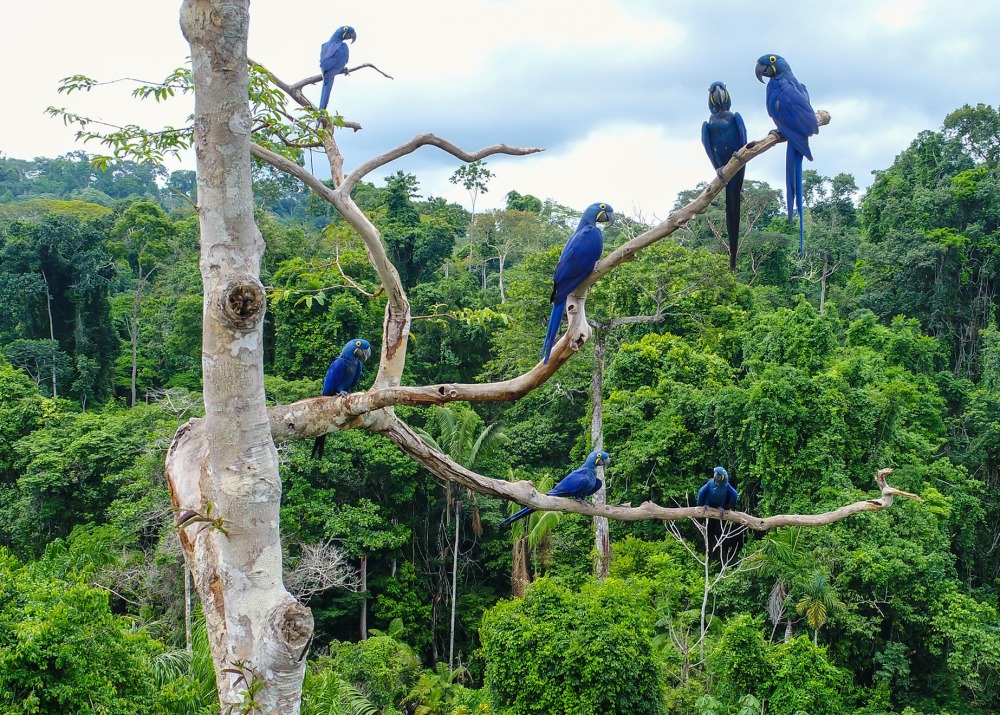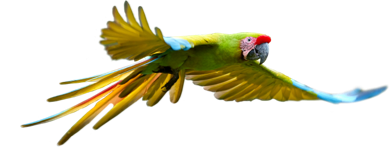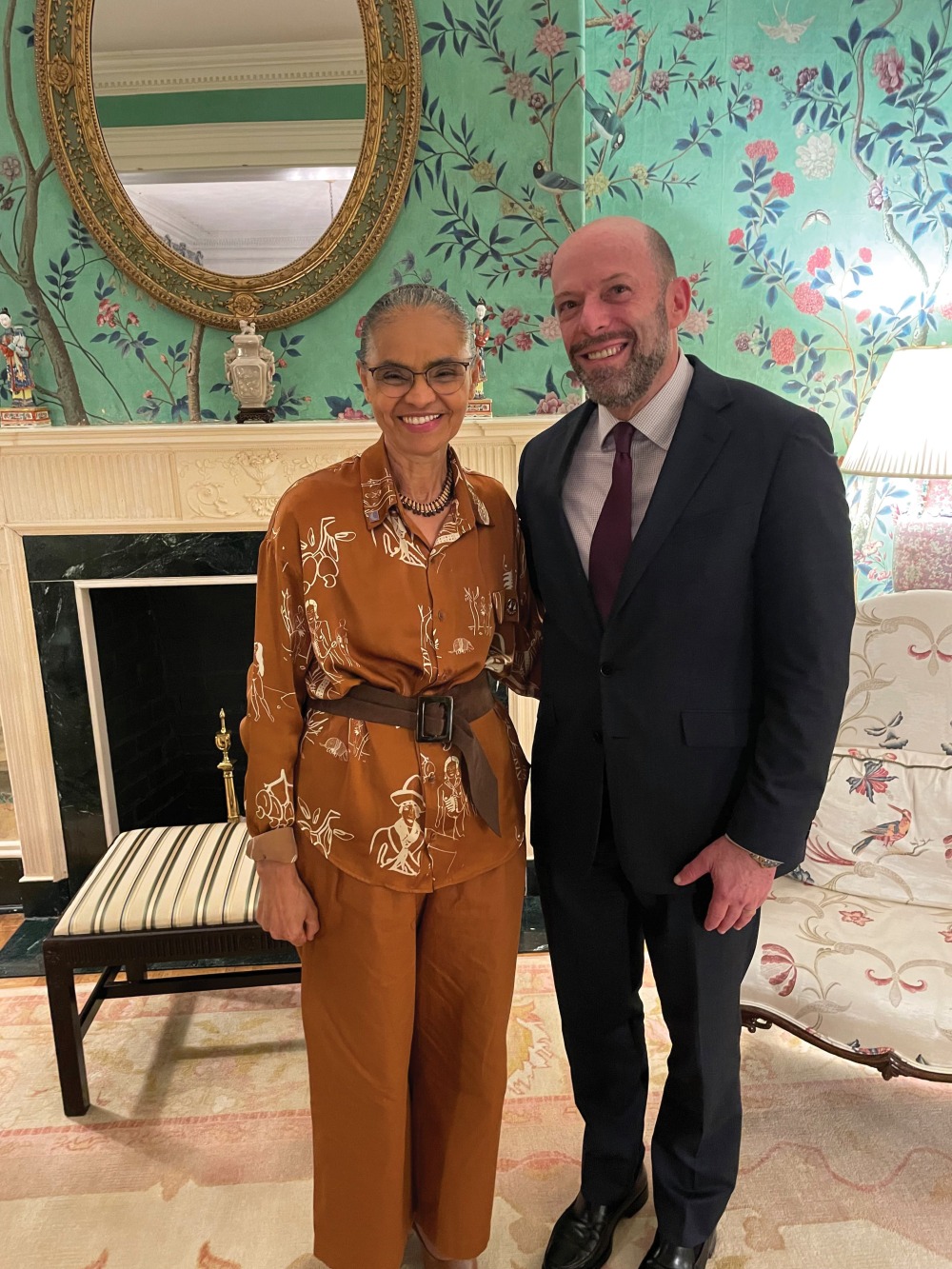Rainforest Trust’s Brazil Strategy

An extraordinary opportunity in Brazil:
A message from our CEO
When renowned conservation author David Quammen agreed to join our board last summer, I bought a used hard copy of his most famous book, The Song of the Dodo, which I had never read.
About two-thirds of the way through, Quammen describes visiting the Brazilian Amazon with Tom Lovejoy, the radiant and extraordinarily effective conservation biologist who, more than anyone else, focused the world’s attention on the plight of the Amazon. Lovejoy, of course, would later join Rainforest Trust’s board, document the Amazon tipping point and, sadly, die a little over a year ago.
In the 1980s, Lovejoy devised a huge experiment in the Brazilian Amazon to answer the question of how large nature reserves need to be to save species and ecosystems. Cattle farmers were clearing the forest but were required to leave a portion standing, and Lovejoy persuaded them to leave that portion as a collection of experimental plots of intact forest of various sizes surrounded by desolate, burned wasteland.
Quammen describes what happened to different wildlife species—and to individual animals—finding themselves marooned on these islands of forest in a sea of destruction. First the jaguars and other large predators disappeared because the plots were not large enough for their ranges and the prey they needed. Then the large herbivores—deer and peccaries—vanished. Then the primates, and most birds, and butterflies, and even many plant species.
Quammen’s description of the plight of a pair of bearded saki monkeys had me in tears.
“The sakis were canopy dwelling creatures unaccustomed to ground travel. Their lonely confinement on such a small island must have been hard for these two individuals…. Within the reserve, only one tree was in fruit, and before long they had eaten it clean. Then they disappeared, first one, then the other. Maybe they died of starvation. Maybe, pushed to extremes, they came down and made a run for it.”

View the Rainforest Trust Brazil Strategy
The stakes are huge. Within the Brazilian Amazon, 141 million acres of land are government controlled but not yet designated for a particular purpose. Each and every one of these acres could be preserved forever as part of a protected area such as an lndigenous reserve or national park. Or it could be chain-sawed and burned to the ground for beef or soy. Please, will you consider joining this critical fight?
The science and advocacy of Lovejoy and Quammen, and many other people, encouraged Brazil, under President Luiz Inácio Lula da Silva, to prioritize saving the Amazon, and between 2004 and 2012 deforestation was reduced by more than 80%. But then it started to creep back up, and that dreadful trend accelerated under President Jair Bolsonaro during whose administration an area the size of Belgium was burned. Bolsonaro also pledged that no new Indigenous territories or other protected areas would be created under his watch, leaving Rainforest Trust with few options to protect the Amazon in Brazil.
But that did not stop us from trying!
In September 2022, after Quammen joined our board together with our first Brazilian board member, Luiz André Barroso, we were able to approve our first ever large-scale project in the Brazilian Amazon. With support from our donors, this project will protect 2.3 million acres of intact rainforest by strengthening the land tenure of Indigenous and traditional communities, keeping out land-grabbers and preventing the wholesale conversion of forest to pasture. It will do this under the jurisdiction of two Brazilian states, Amazonas and Pará, enabling the project to go forward even without the support of the federal government.
But, wonderfully, the federal government will be supportive. In October 2022, former President Lula beat Bolsonaro in a tight runoff election. It is hard to overstate the importance of this for the global fight to save nature and slow climate change. Lula has pledged to end all deforestation in the Brazilian Amazon by 2030. He has reappointed as Environment Minister Marina Silva, the conservationist from the Amazon who oversaw the successful decline in deforestation in his previous administration and then resigned because she opposed his road-building plans.
This provides an extraordinary window of opportunity, a rare second chance to save the world’s largest and most important rainforest. Rainforest Trust has been preparing for this opportunity for years and we are hitting the ground running. Our Brazilian Conservation Strategist, Andrea Carneiro, was in the capital, Brasilia, in January and in Manaus (the capital of Amazonas State) in March meeting with leaders from the Ministries of Environment and Indigenous Affairs and with leading Brazilian conservation NGOs and representatives of Indigenous communities. They are all eager to move forward with creating new protected areas, many of them Indigenous reserves, at scale. The urgency is great–Lula’s term is four years but the window of opportunity for rapid political progress is more like two.

During President Lula’s official visit to Washington, D.C. in February 2023, I had the privilege to meet Environment Minister Silva at Blair House where she was staying. She is a powerful, small, articulate, determined woman who once tapped rubber in the Amazon, learned to read at age 20, and had to undergo decontamination for mercury poisoning as a result of river contamination by illegal gold-miners. She asked for our help prioritizing what areas should become Indigenous reserves and protected areas and supporting the protection of 20 million acres of rainforest during Lula’s term in office. Of course, I promised—and I hope you will be as motivated by this pledge as I am.
The stakes are huge. Within the Brazilian Amazon, 141 million acres of land are government controlled but not yet designated for a particular purpose. Each and every one of these acres could be preserved forever as part of a protected area such as an Indigenous reserve or national park. Or it could be chain-sawed and burned to the ground for beef or soy. As Tom Lovejoy and David Quammen taught us, each and every one of these acres of forest is the irreplaceable home of myriad, exquisite creatures found nowhere else on Earth: butterflies and beetles, toucans and antbirds, mahoganies and giant water lilies, jaguars—and, yes, saki monkeys.
For the Amazon,
Dr. James C. Deutsch, CEO
Donate Now to Save the Brazilian Amazon

Sign up to receive the latest updates
"*" indicates required fields









